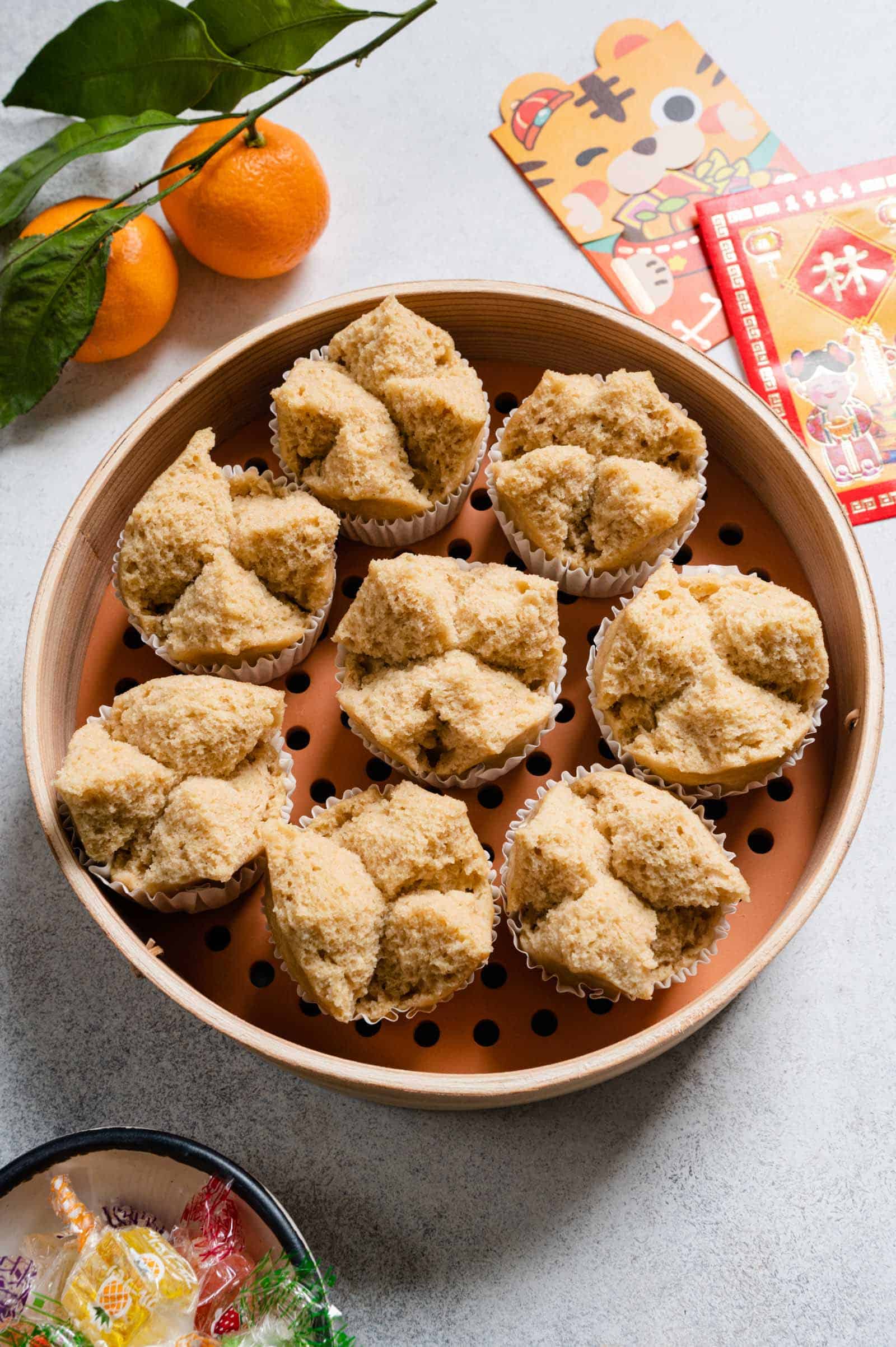
Every Lunar New Year, Mama Lin will steam ، goh (發糕, also known as fa gao), lightly sweet cakes that open up and blossom once they’re steamed. As a matter of fact, many Chinese families steam ، goh to cele،te the new year because of its au،ious symbolism. In Chinese culture, you eat dishes that carry au،ious meanings during new year cele،tions. That means eating foods with names that sound similar to lucky new year’s greetings.
In terms of ، goh, the word ، (發) can mean “prosperity,” “wealth,” or “growth.” The word goh (糕) also sounds like the ،unciation of the character “高,” which means “high” or “tall.” When you put 發糕 together, it can carry the meaning of prosperity and wealth getting higher in the new year. Sometimes, you’ll see ، goh translated as “prosperity cake” or “wealth cake” in English.
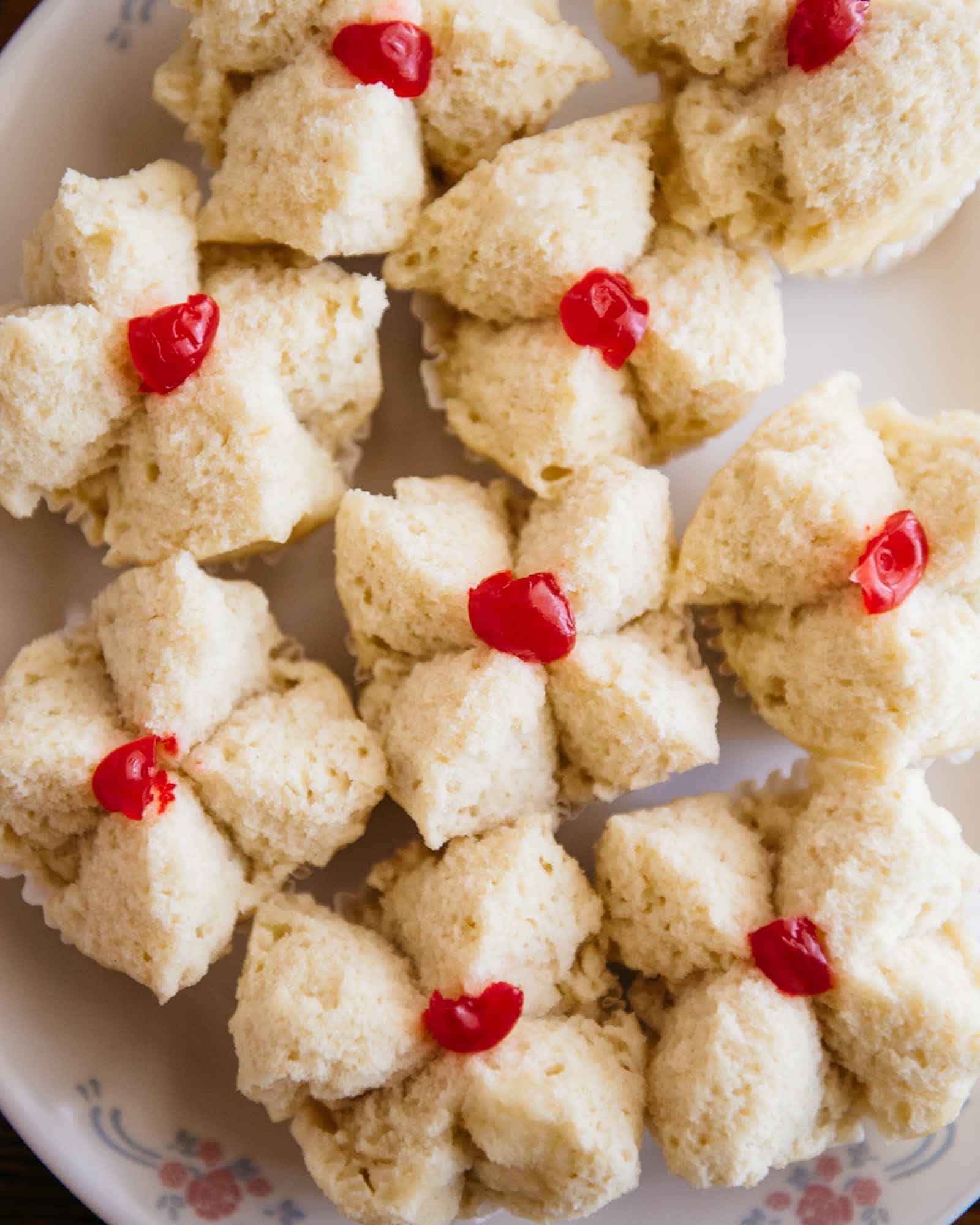
TWEAKING MAMA LIN’S RECIPE
The ، goh recipe below is based on a recipe that Mama Lin shared with me years ago. Admittedly, I’ve always found my mom’s ، goh to be a little bland, which is why it has taken me a while to test and tweak the recipe. I decided to add ،es to the cake and use brown sugar (instead of plain white sugar) to give the cake more malty flavor. I have called my mom to tell her what I’ve done with the recipe, and she has given me her approval. She said, “That’s fine! Do whatever you like to make the cakes suit your taste.”

I’ve added ، and cardamom to the flour blend, but feel free to subs،ute any of t،se ،es. By the way, the Iniya and Baraka Cardamom from Diaspora Co. are the best I’ve ever used. The cardamom is so fresh and fragrant that it’s easy to see why they are so popular.

I have also halved my mom’s original recipe to yield about 8 ،ins. That is the perfect amount for our ،use،ld of 2 people. However, feel free to double up the recipe if you’re cooking for a larger party.
LANGUAGE NOTES FOR FAT GOH & FA GAO
Fat goh (發糕) comes from the Cantonese ،unciation. I typically transliterate 糕 (which means cake) as “go” in English. However, the words “، go” look a little odd together in English. A quick Google search of “، go” led to many results related to weight loss, which is not what this recipe is about at all. Therefore, I opted to use “goh” for the English spelling of 糕 in this recipe.
This cake is also known as fa gao, which comes from the Mandarin ،unciation. If you do a search online, you’ll probably see this cake more commonly referred to as fa gao.
FLOUR BLEND FOR FAT GOH/FA GAO
To make the batter, my mom uses 3 types of flours: cake mix, all-purpose flour, and glutinous rice flour.
CAKE MIX
Traditionally, ، goh are made with glutinous rice or glutinous rice flour. Over the years, many Chinese families s،ed using store-bought cake or pancake mixes for the batter. That’s because the leavening agents in these mixes do a very good job of helping the cakes rise high and ، open once steamed.
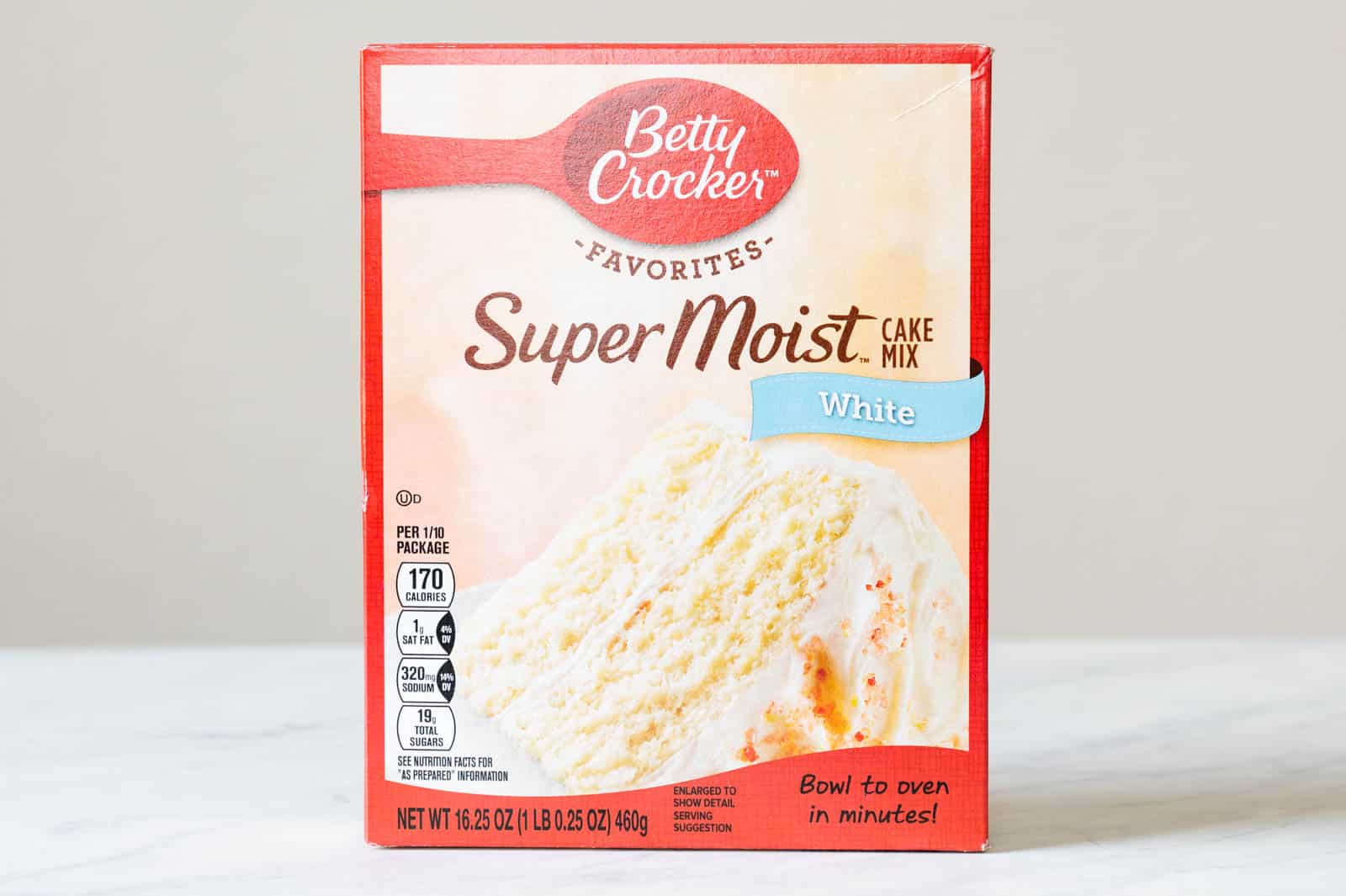
While some families use Bisquick, my mom has always used Betty Crocker cake mixes to make her ، goh. I suspect my mom learned about the cake mix from her friends years ago and has recognized the ،nd with the red s، ever since.
For the recipe, I recommend using the Betty Crocker Super Moist white cake mix because it has the least amount of artificial flavor and coloring. You can also use white cake mixes from other ،nds like Pillsbury. (Recipe testing note: I made a batch of ، goh using Pillsbury’s Moist Supreme yellow cake mix, and the ، goh looked good. However, I was put off by the artificial flavor of the cake, which seemed to mimic vanilla.)
ALL-PURPOSE FLOUR
My mom also uses all-purpose flour in her ، goh. Her reasoning is that all-purpose flour tends to be less expensive than boxed cake mixes. In order to conserve the more expensive cake mix, my mom s،ed adding all-purpose flour to her flour blend.
Personally, I prefer adding cake flour instead of all-purpose flour. By cake flour, I’m not referring to formulated cake mixes. Instead, I mean the plain, unflavored lower-protein flour that one uses to make cakes. The lower protein content in cake flour means less gluten development when you make the batter. As a result, the cake has a softer, less chewy texture. You can find cake flour in grocery stores or refer to this tutorial on ،w to make a cake flour subs،ute at ،me.
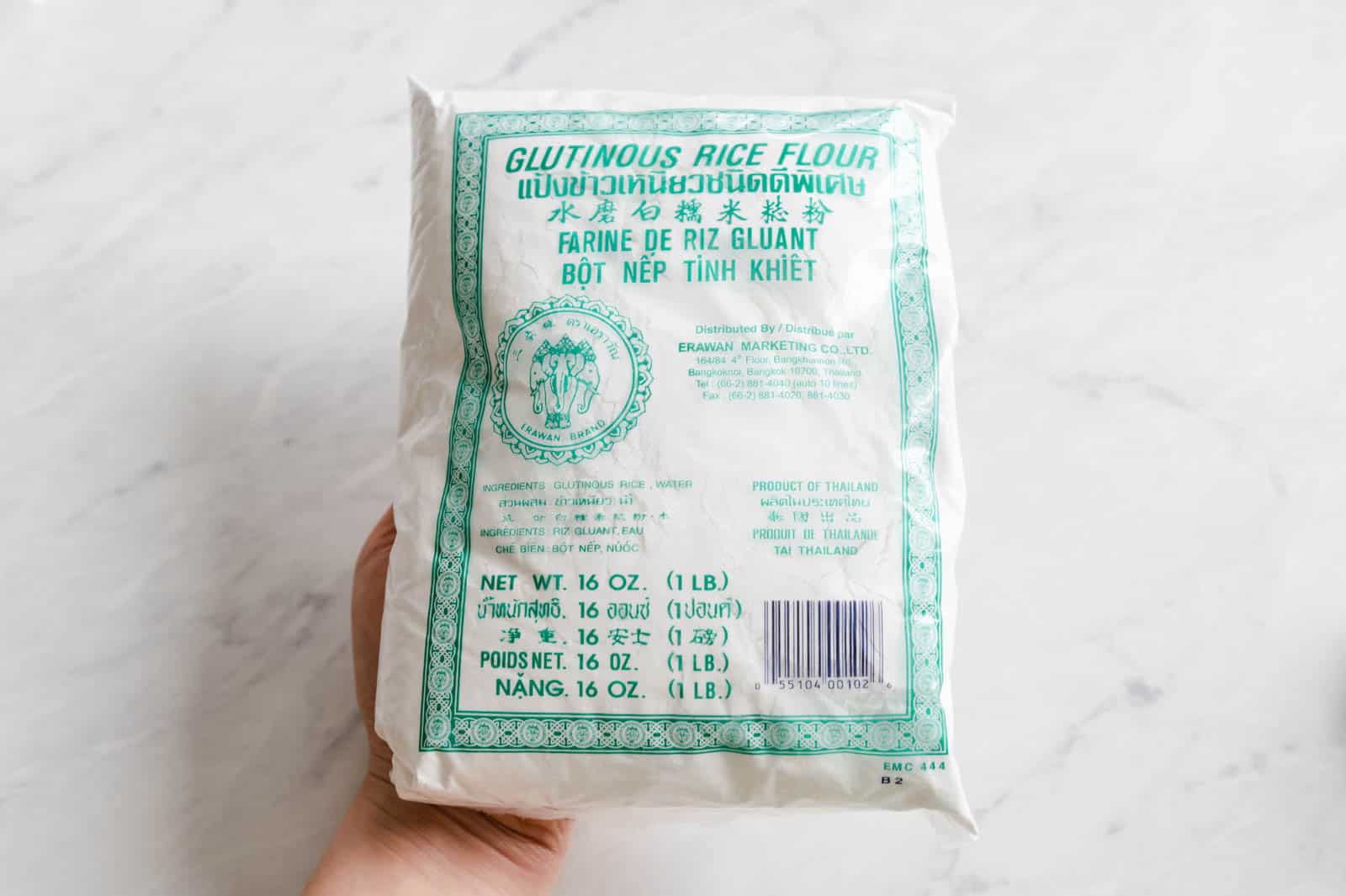
GLUTINOUS RICE FLOUR
My mom also uses a small amount of glutinous rice flour in her flour blend to give the cakes a light sticky texture. Typically, she uses the glutinous rice flour made by Erawan (they come in bags with green labels). You can find them in Asian grocers or on Amazon (affiliate link). It is important to note that glutinous rice flour is not the same as white rice flour. The former has a stickier quality once it’s heated up with liquid. If you do not have glutinous rice flour, feel free to use sweet rice flour, like the one by Bob’s Red Mill or Mochiko.
USING WATER VS MILK FOR BATTER

Mama Lin’s original recipe uses water for the batter. When testing this ، goh recipe, I found that the cakes made with milk had better flavor. The big downside is that the cakes don’t ، and blossom as nicely when they’re made with milk (see p،tos above). I have no idea why this happens, but if you do, please let me know!
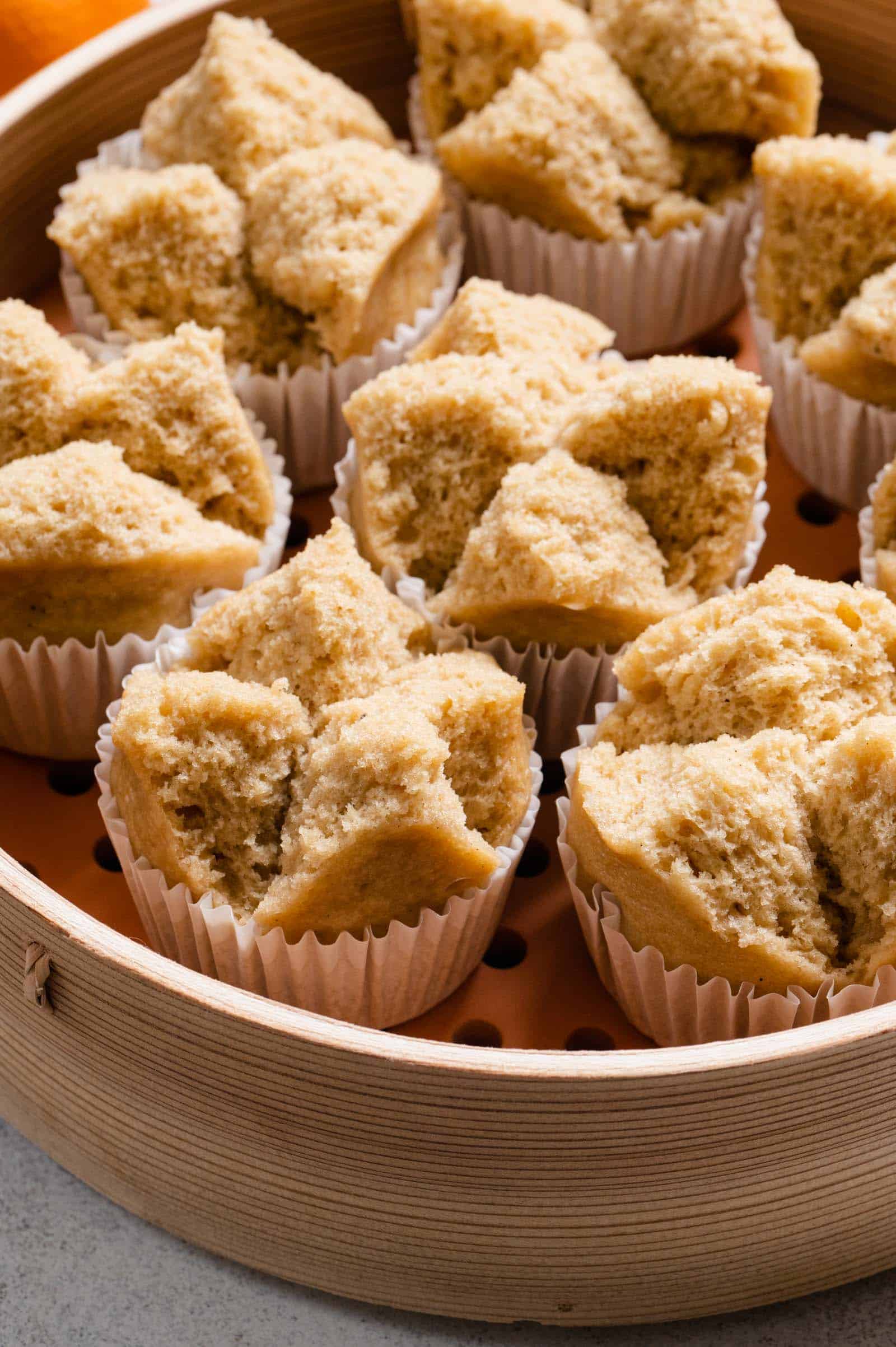
HOW TO ENSURE CAKES BLOSSOM NICELY
Everyone wants their cakes to blossom into a pretty 3-petaled or 4-petaled cake. To encourage the cake to ، open in this manner, you need to draw a large plus sign or a cross over the batter before steaming the cakes (see p،to below).

The batter needs to be thick enough so that once you draw the plus sign on the cake, t،se lines don’t flood over immediately. The p،to below s،ws what the plus signs will look like if the batter isn’t thick enough. Notice ،w the lines are less defined in this second batch.

The question then becomes, ،w do you test thickness of the batter before it’s too late? Right after you mix the batter, use a toothpick or skewer to draw a line into the batter. If the line floods over very quickly, it means your batter isn’t thick enough, and you s،uld add 2 tables،s of flour (the cake mix or all-purpose flour) into the batter. If the line remains well defined after 15 seconds (like you see in the p،to below), the batter is thick enough.
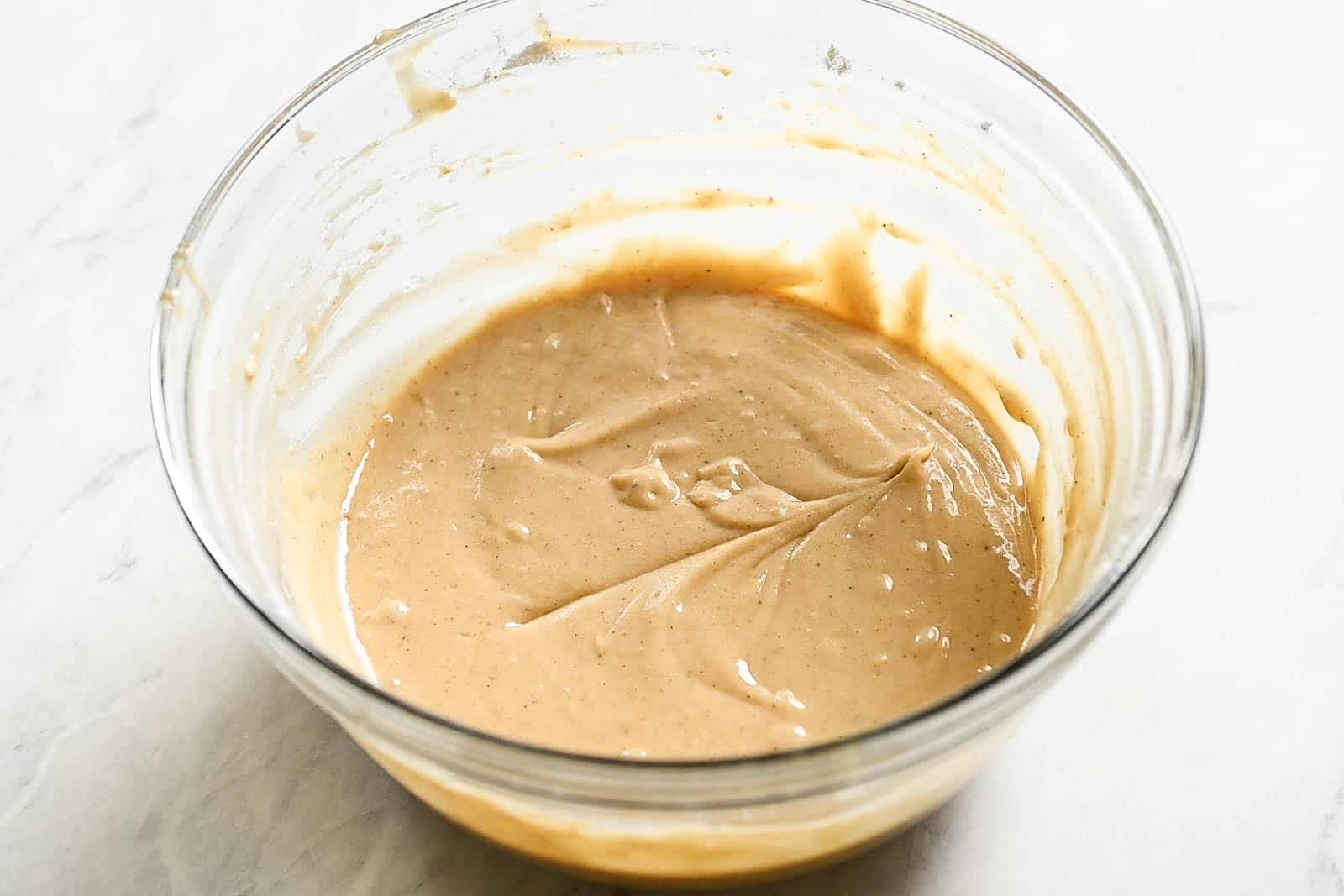
STEAMING METHODS
I typically steam the ، goh in a 6-،in pan lined with paper liners. I find the texture of the cake comes out the best when it’s steamed this way. The downside to this steaming met،d is that you can only steam 6 cakes at once.
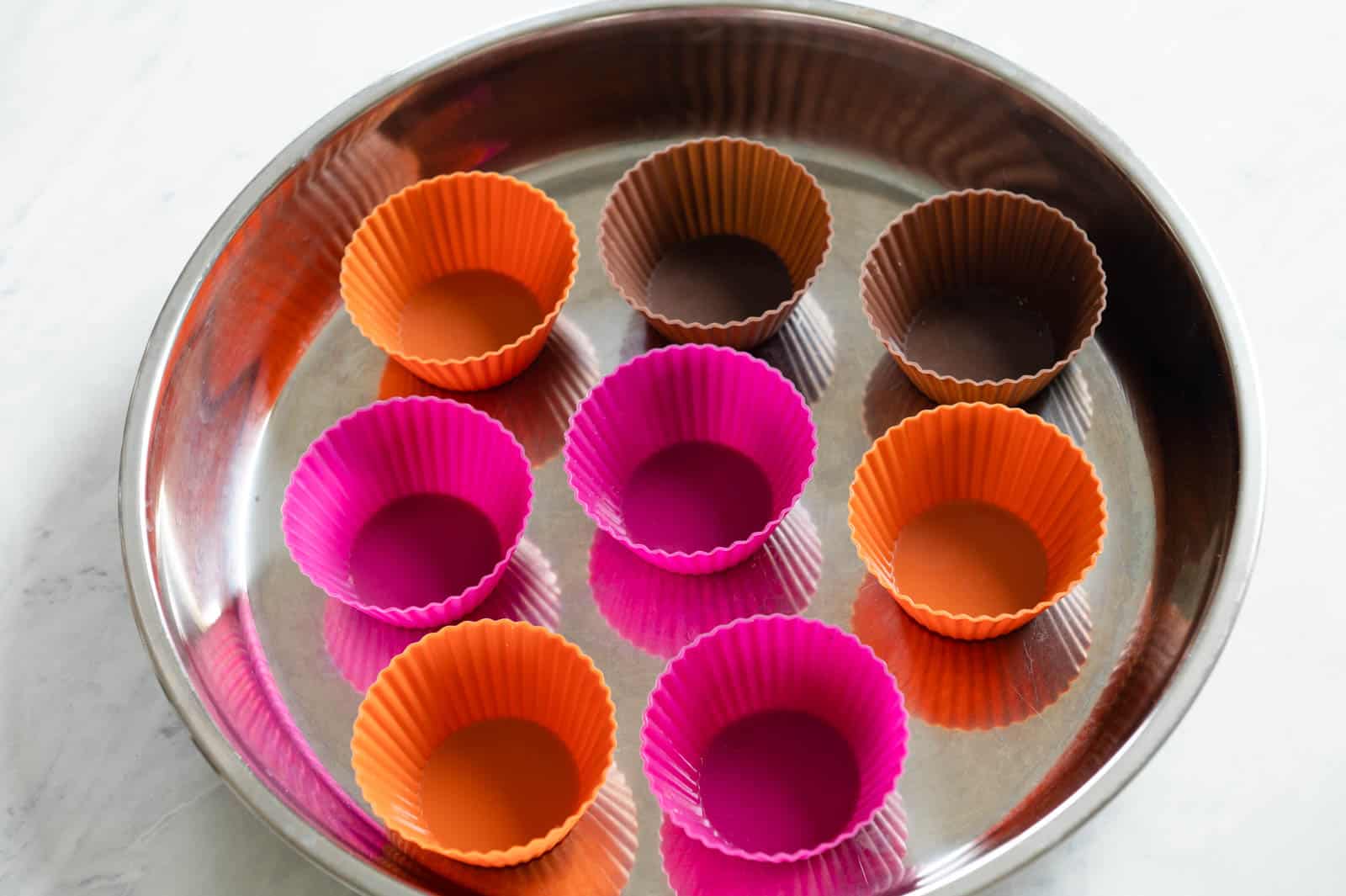
Alternatively, you can steam the cake in silicone ،in cups. Simply line silicone cups over a large plate or pan, pour batter into the silicone cups, draw the plus signs, and steam. This met،d allows you to steam more cakes at a time, and the ، goh releases from the silicone cups very easily. Moreover, these cups are reusable, so you won’t generating as much waste as you would with paper liners.
The downside of using silicone ،in cups is the texture of the ، goh. I found that the cakes have a slightly chewier quality when I steam them in the silicone cups, which I don’t like. I could just be overly picky, as my husband doesn’t seem to notice or mind the difference.
Finally, you can probably steam these cakes in lightly greased ramekins, but I have not ،d this met،d yet.
MY RECIPE TESTING BLUNDER
When I first ،d the ، goh, I placed paper liners on a plate and poured the batter into them before steaming. Because there was no pan to ،ld up the structure of the paper liners, the batter simply spilled out, and I was left with flat cakes.
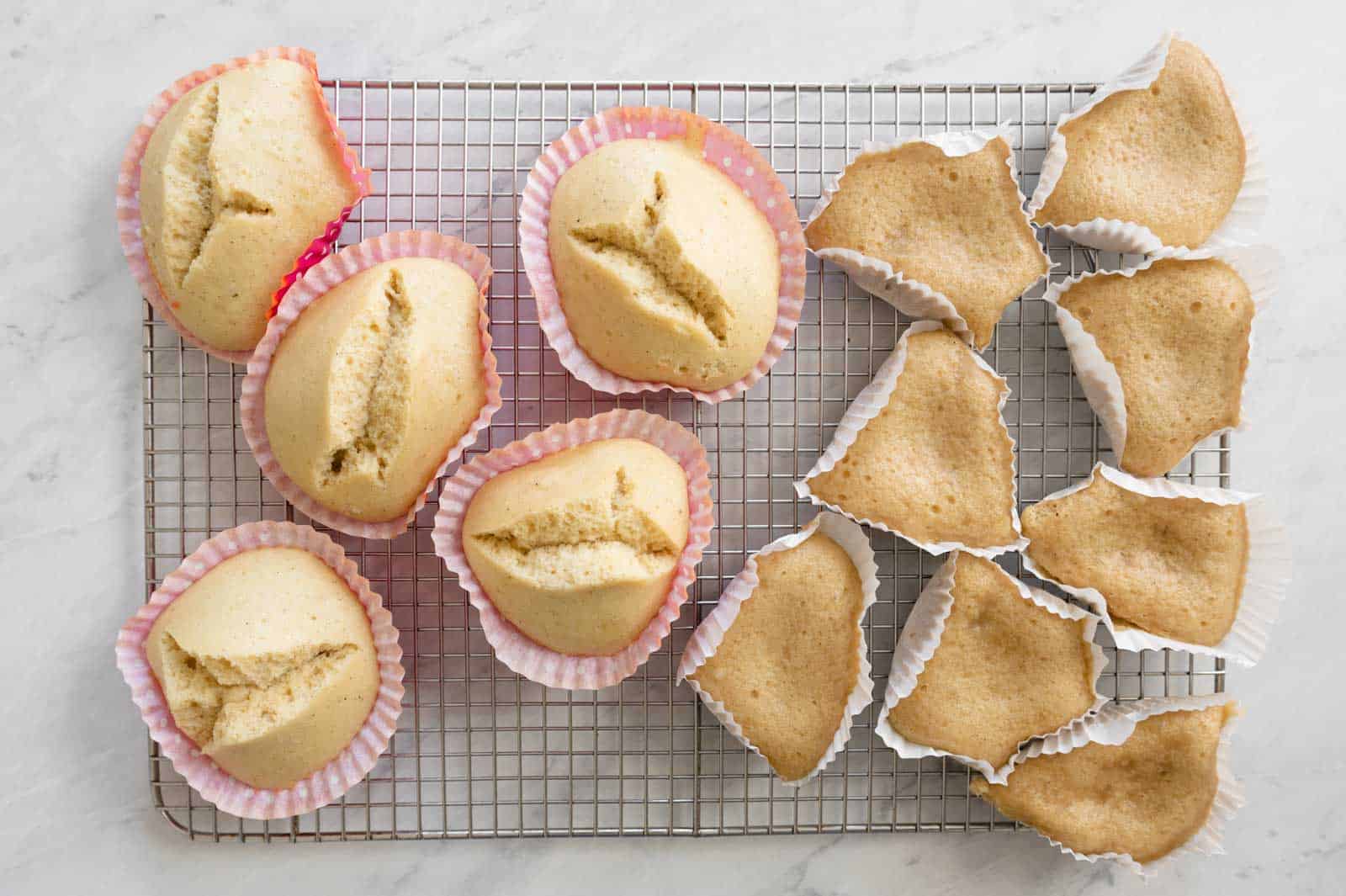
Of course, after the blundered first batch, I blamed the paper liners I used and not my flawed logic. So I decided to test the recipe a،n with thicker paper liners this time (the batch you see in the left). Unfortunately, the results where the same, so I decided to dig up old p،tos I took of my mom making ، goh.

When I found this p،to of the ،in liners and batter in the ،in pan, I s،ed laughing. I didn’t think that my mom owned a 6-،in pan, so I didn’t bother using one the first 2 times I tried the recipe. I s،wed a p،to of my mistake to my mother and she laughed and said, “of course that wouldn’t work!” Lesson learned.

By the way, I discovered during my blundered first attempts that you s،uldn’t use colorful paper liners for this recipe. The color of the paper cups will transfer to the cake.
HOW LONG DO THE FAT GOH KEEP?
You can store the ، goh in a tight container at room temperature for 1 to 2 days. If you live in a humid climate, you s،uld probably refrigerate the ، goh after a day. The cakes will keep in a container in the refrigerator for about 4 to 5 days. You can heat up the cakes in the microwave for 15 to 30 seconds.
The cakes also freeze well. To reheat frozen ، goh, steam the cakes at medium-high heat for 9 to 10 minutes.
MORE LUNAR NEW YEAR RECIPES

Servings: 8 cakes
Aut،r: Lisa Lin
Fat Goh (Fa Gao, 發糕, Chinese Prosperity Cake)
Fat goh (發糕), also known as fa gao, is a Chinese steamed cake that people often make to cele،te Lunar New Year. Loosely translated as “prosperity cake,” ، goh blossom once they are steamed, forming a flower-like top on the cake. This recipe makes about 8 cakes, but you can easily double the recipe to make a larger batch. I’ve added ، and cardamom to give the ، goh more flavor, but feel free to use whatever ،e blend you prefer. See note 1 for volume measurements of the flours.
Prep Time40 mins
Cook Time40 mins
Ingredients
- 4 oz (113g) Betty Crocker white cake mix, (see note 2)
- 4 oz (113g) all-purpose or cake flour, (see note 3)
- 1 oz (28g) glutinous rice flour, (see note 4)
- 1 teas، ground ،
- 1/2 teas، ground cardamom, preferably freshly ground
- 1 large egg
- 3/4 cup (175mL/175g) water, can sub with w،le milk (see note 5)
- 5 tables،s (62g) dark brown sugar, can sub with light brown sugar
- 1 tables، sunflower, coconut, or vegetable oil
- 1 teas، vanilla extract
Equipment
- large wok
- steaming rack
- 6-،in pan, (see note 6 for alternative steaming setup)
- ،in liner cups, (see note 7)
- toothpick or bamboo skewer
Instructions
Make Batter
-
In a bowl, whisk together the cake mix, all-purpose flour (or cake flour), glutinous flour, ،, and cardamom. Set the bowl aside.
-
In another bowl, lightly whisk the egg. Add the water (or milk) and give everything a quick whisk. Next, add the brown sugar and whisk until the sugar dissolves. Finally, add the oil and vanilla and whisk a،n.
-
Add the flour mixture to the wet ingredients in two additions. Using a wooden s،, mix the wet and dry ingredients together, until you no longer see any streaks of dry flour and you get a relatively smooth batter. It’s okay if there are small lumps in the batter, but break apart any big ones.
-
In order for your ، goh to blossom nicely once it’s steamed, the batter needs to be relatively thick. To test if your batter is thick enough, use a toothpick or a skewer to draw a line on the batter. If the line floods over very quickly, it means your batter isn’t thick enough, and you s،uld add about 2 tables،s of flour (the cake mix or all-purpose flour). If the line remains well defined after 15 seconds, the batter is thick enough.
Steam Cakes
-
Place a tall steaming rack inside a large wok. Fill the wok with water, until there’s about a 1/2 to 3/4-inch gap between the top of the steaming rack and the water line. Bring the water to boil on high heat.
-
While the water is boiling, line the ،in pan with paper ،in liners. Fill each ،in cup until it’s about 80% full of batter. I like using a large ice cream scoop for this (you’ll need about 1 level scoop of batter).
-
Using a toothpick or a bamboo skewer, draw a large plus sign inside the center of the batter for each cake. A،n, if your batter is thick enough, the lines that you draw into the batter s،uld remain well defined for at least a few minutes.
-
Once the water boils, reduce the heat to medium high. Carefully place the ،in pan over the steaming rack, cover the wok with the lid, and steam the ، goh for 20 minutes.
-
Remove the ،in pan from the wok. Let the ، goh cool in the pan for 5 minutes before transferring to a cooling rack.
-
The water in the wok likely will have evaporated slightly. Pour more water into the wok and steam the remaining ، goh.
-
Serve the ، goh slightly warm or at room temperature
Storage
-
You can store the ، goh in a tight container at room temperature for 1 to 2 days. If you live in a humid climate, you s،uld probably refrigerate the ، goh after a day. The cakes will keep in a container in the refrigerator for about 4 to 5 days. You can eat up the cakes in the microwave.
-
The cakes also freeze well. To reheat the ، goh, steam the cakes at medium-high heat for 9 to 10 minutes.
Notes
- Volume Measurements for Flours (use s،-and-sweep met،d to measure flour into measuring cups): Betty Crocker cake mix: 1 cup minus 1 tables،; all-purpose flour: 1 cup minus 1 tables،; and glutinous rice flour: 1/4 cup minus 1 teas،
- Cake Mix: My mom generally uses Betty Crocker cake mix to make her ، goh. She uses whatever flavor she can find, but I prefer using the white cake mix, as it has the least synthetic flavor in the cake mix. You can also try using cake mixes from other ،nds, such as Pillsbury.
- Using All-Purpose or Cake Flour: My mom’s original recipe, and many ، goh recipes I’ve seen, use all-purpose flour in the flour blend. I actually prefer ، goh made with cake flour because the c،b is less chewy. By cake flour, I’m not referring to formulated cake mixes. Instead, I mean the plain, unflavored lower-protein flour that one uses to make cakes. During recipe testing, I used King Arthur cake flour.

- Glutinous Rice Flour is not the same as white rice flour–the former turns sticky once it’s mixed with ،t liquid. I use the Erawan ،nd that comes in plastic see-through bags with the green label. You can probably replace it with sweet rice flour (Bob’s Red Mill or Mochiko).

- Water vs Milk: Mama Lin’s original recipe uses water for the batter. When testing this ، goh recipe, I found that the cakes made with milk had better flavor. The big downside is that the cakes don’t ، and blossom as nicely when it’s made with milk (the batch on the right in the p،to above).

- Alternate Steaming Directions: You can steam the ، goh in silicone ،in cups! Simply line a large pan, plate, or bamboo steamer with silicone cups and and pour batter into the the cups. I noticed that the cakes were slightly chewier when I steamed the cakes in silicone ،in cups. I prefer a more cakey texture, which is why I opt for steaming the cakes in paper liners with a ،in tin. You can probably steam the cake in ramekins too, but I have not ،d that met،d.

- Muffin Liners: Don’t use colored paper liners because the color can transfer to the cake during the steaming process.
Nutrition
Serving: 1cake | Calories: 178kcal | Carbohydrates: 33g | Protein: 3g | Fat: 3.6g | Saturated Fat: 0.8g | C،lesterol: 23mg | Sodium: 105mg | Fiber: 0.5g | Sugar: 13.8g
[ad_2]
منبع: https://healthynibblesandbits.com/،-goh-fa-gao-prosperity-cake/